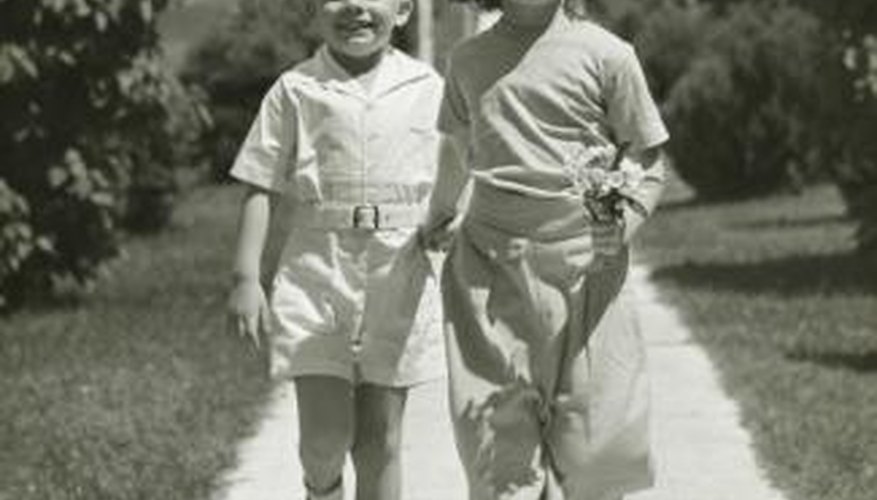During the first half of the 1940s, Britain was at war and just recovering from the Depression. Fussy, decorative clothing styles were frowned upon because the troops overseas had to be funded. Children's clothing of the time was fairly simple, designed for comfort and durability, and usually made of natural fabrics. Boys and girls wore very different types of clothing.
Boys' clothes
Very young boys wore knee-length shorts called knickers in the UK, North America and across Europe. Sometimes short overalls were worn over a short-sleeved shirt. In the early 1940s boys wore matching suit trousers and jackets of wool or cotton twill. Older boys grew older, they wore full-length trousers. Cuffs, pleats and extra pockets were eliminated in an effort to save fabric during World War II, and many households reused items and mended damaged clothing because of rationing.
- Very young boys wore knee-length shorts called knickers in the UK, North America and across Europe.
Boys' shoes and accessories
Boys wore ankle socks and shined leather shoes in the 1940s. Often a white handkerchief was tucked into the breast pocket of a suit coat. Boys wore belts to support the trousers. Young boys wore simple hats or caps to protect them from the sun and cold.
- Boys wore ankle socks and shined leather shoes in the 1940s.
- Boys wore belts to support the trousers.
Girl's clothes
Girl's of the 1940s wore dresses like their mothers. Very young girls wore jumpers with a blouse underneath. Older girls wore dresses remade from household sheets, old clothing and other fabric items. Dresses were commonly knee-length, with short puffed sleeves. Cotton, linen and wool were fabrics used for day dresses, while taffeta or an acetate/rayon blend would be used for a party or evening dress. Recycled ruffles and lace were added to increase the length of dresses and to cover worn-out fabric.
- Girl's of the 1940s wore dresses like their mothers.
- Recycled ruffles and lace were added to increase the length of dresses and to cover worn-out fabric.
Girl's shoes and accessories
Girls wore ankle socks or knee socks with leather shoes, often in the Mary Jane style. Simple satin ribbons were used to decorate a young girl's hair or to embellish a waistband on a dress or trim a hat. Ruffled yokes were added to dresses to embellish a plain outfit. Girls wore felt hats in the winter.
- Girls wore ankle socks or knee socks with leather shoes, often in the Mary Jane style.
- Ruffled yokes were added to dresses to embellish a plain outfit.
